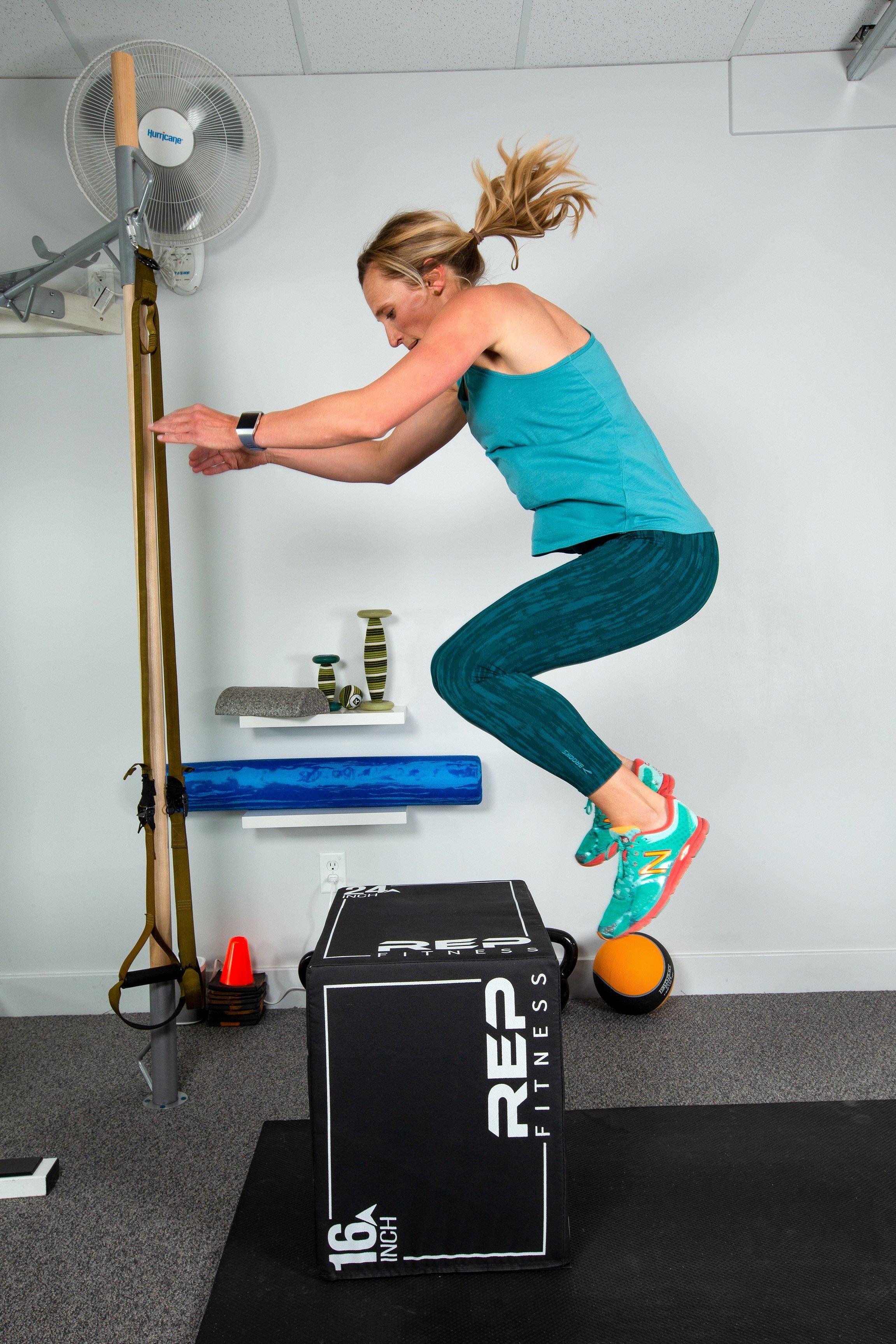Plyometrics have been utilized in late stage Physical Therapy and strength and conditioning programs for decades. These jumping and bounding movements are initially attributed to the Russian track and field coach Verkhoshanski in the 1960s as shock or jump training. The term plyometrics is attributed to Purdue University track and field coach Fred Wilt in the 1970s. Since this time these movements have become a staple in our Boulder Physical Therapy practice due to their effectiveness at increasing power, sport specific movements, and accelerating a patient’s final stages of recovery. In addition, more recent research has shown the benefits of jumping on bone density.
Large forces are placed upon the body during many recreational and sports activities. For example, runners land with 2-4 times their body weight during a normal running gait. Energy is stored in the elastic areas of a muscle during landing before being quickly released at push off during these movements. If an athlete is slow during this transition between a pre stretch lengthening (eccentric) and shortening (concentric) contractions the energy is lost and is not able to improve performance. When done correctly, a rapid transition between eccentric and concentric contractions leads to increased speed, power, and performance. Authors have shown the rate of muscle stretch is the most important component of an effective program.
Our muscle fibers are recruited a hierarchical fashion from slow to fast. Effective plyometrics must be performed a high intensity to properly recruit all fibers within a muscle, in particular, the fast twitch fibers. Because of these demands, participants in plyometric programs should be cleared by a Physical Therapist to determine if they are appropriate. Individuals should be trained and familiar with weight training movements before transitioning to plyometrics. Additional considerations should include age, past medical history, injury status, joint health, movement patterns, and functional goals.
Authors recommend participants are encouraged to start slow and anticipate soreness in the 24-48 hours after beginning the program (DOMS) (Davies et al. Int J Sports PT. 2015). Bilateral jumps should be initiated before single leg jumps and number of foot contacts per session should be 80-100, 100-120, 120-140, for beginning, intermediate, and advanced categories, respectively. Foot contacts should be program down into sets of 5-10 reps with at least a minute in between each set. Authors recommend 2-3 days in between plyometric training sessions for adequate recovery. Beginner plyometrics include skipping, squat jumps, and split squat jumps. Intermediate participants should look to increase intensity with lateral jumps and tuck jumps. Finally, advanced participants can look to add difficulty through depth jumps, box jumps, and depth jump to a box landing. Plyometric training often progresses from slow, controlled, sub maximal movements to fast, randomly assigned, and maximal intensity movements.
Click Here to schedule your next appointment with the experts at MEND

